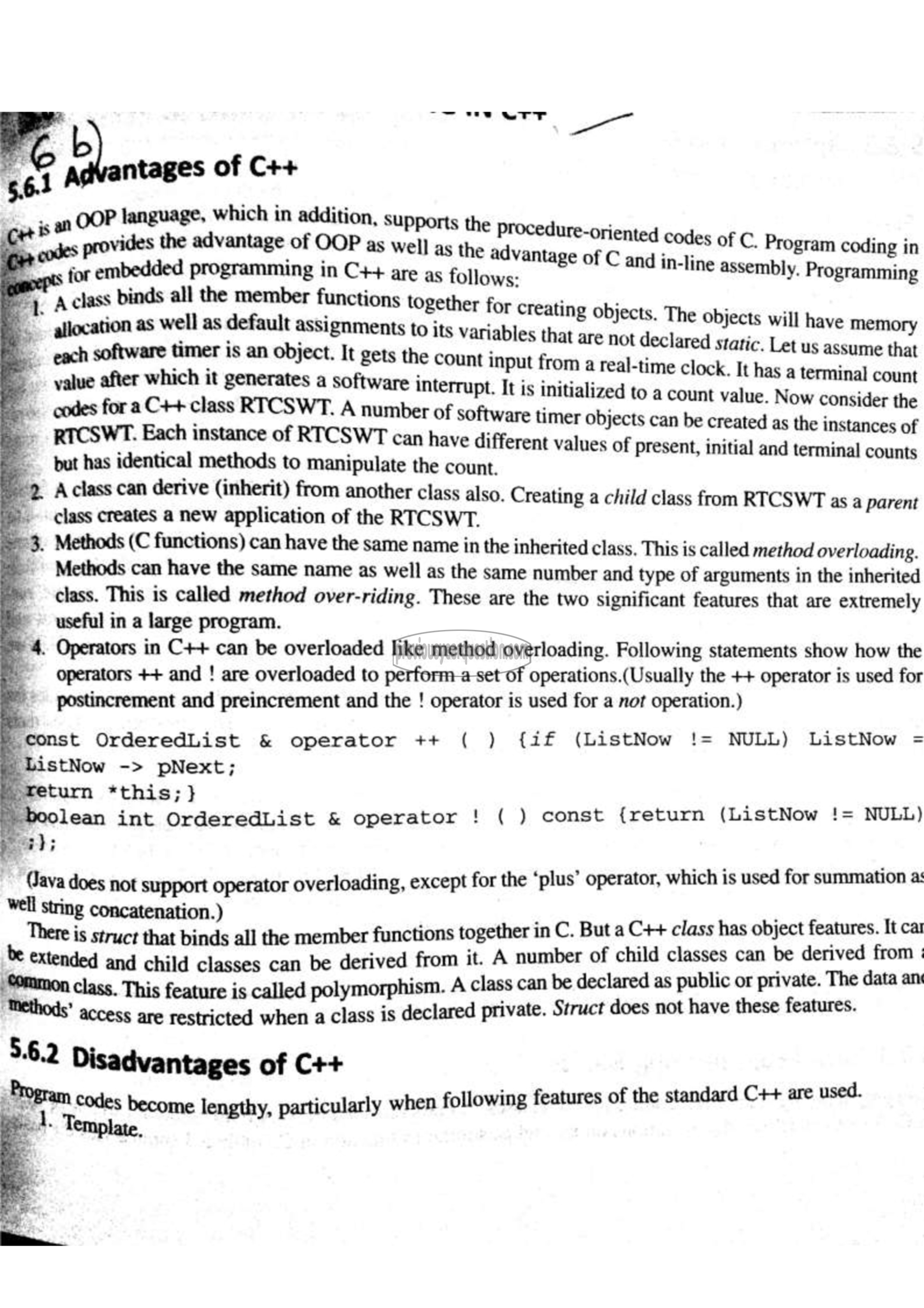APJ ABDUL KALAM TECHNOLOGICAL UNIVERSITY Previous Years Question Paper & Answer
Semester : SEMESTER 6
Subject : Embedded System
Year : 2018
Term : MARCH
Scheme : 2015 Full Time
Course Code : EC 308
Page:73
ह £ ⋅∙∙ ∙
≼⋯⋯∣∙⊶∥∝∙∐∐≔⋯∾ യത്തെ lues of present, initial and terminal counts
2. Aciass can derive (inherit) from another class also. Creatin
>. class creates a new application of the RTCSWT.
3. Methods (C functions) can have the same name in the inherited class. This is called method overloading.
Methods can have the same name as well as the same number and type of arguments in the inherited
class. This is called method over-riding. These are the two significant features that are extremely
useful in a large program.
. Operators in C++ can be overloaded like method overloading. Following statements show how the
operators ++ and ! are overloaded to perform a set of operations.(Usually the ++ operator is used for
postincrement and preincrement and the ! operator is used for a 1101 operation.)
a child class from RTCSWT as a parent ع
‘const OrderedList ع operator ++ ( ) {if (ListNow != NULL) ListNow =
‘ListNow -> pNext;
೫೮೮೧ *this;}
boo int OrderedList & operator ! ( ) const {return (ListNow != NULL)
31;
(ava does not support operator overloading, except for the ‘plus’ operator, which is used for summation a:
well string concatenation.)
There is struct that binds all the member functions together in C. But a C++ class has object features. It car
extended and child classes can be derived from it. A number of child classes can be derived from ۰
fommon class. This feature is called polymorphism. A class can be declared as public or private. The data an
| " access are restricted when a class is declared private. Struct does not have these features.
5.6.2 Disadvantages of C++
Codes become lengthy, particularly when following features of the standard C++ are used.
் * Template 3
Program 2
ba ٭
